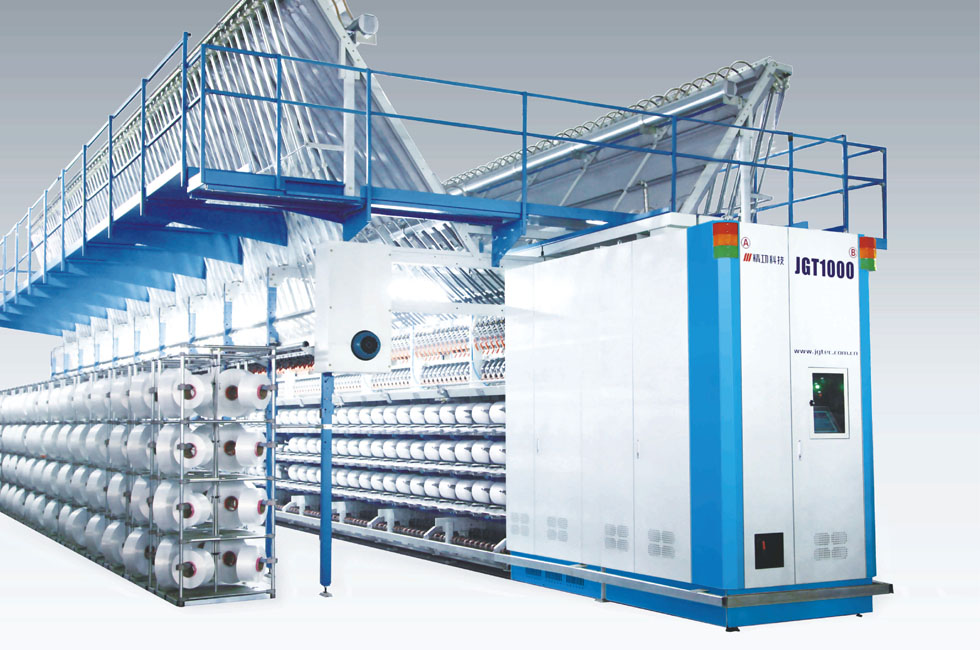Four steps of texturing machine process debugging

How to adjust the process parameters of the texturing machine, in short, the “four steps” of the texturing machine process debugging are: (1) Quick test; (2) Small batch test; (3) Medium batch test; (4) Mass trials.
Quick Test.
After the texturing machine is adjusted, first select 3 to 5 ingot positions for a quick test (also called making a sample). The purpose of making a sample is to determine the best processing conditions.
1: Specifically, the first step of the process technicians should test the fineness and elongation of the POY raw yarn, and calculate the stretching ratio R during the stretching deformation, and R=two roller speed/one roller speed×correction coefficient. The correction coefficient value in the above formula is determined by the elongation of POY. If the POY elongation is large, it is preferable to be greater than 1; otherwise, it is less than 1, and is generally controlled at 0.9 to 1.1.
2: The second step is to choose the D/Y ratio according to the friction discs of different materials and specifications: 9mm thick PU disc, D/Y choose 1.65~1.70, the specific should also depend on the new and old of the PU disc. Such as ceramic discs, choose 1.8 to 1.9, depending on the age of the ceramic discs.
3: In the third step, the commonly used texturing machine speed is generally 750-800m/min.
4: The fourth step is to determine that the temperature of the first hot box is generally 190-200 °C, and the second hot box is generally 165-170 °C.
5: In the fifth step, the wire output ratio is generally about -5.0%, the winding ratio is generally -4.5%, and the measured winding tension is generally 15-18c N.
6: The sixth step is to start the spinning test, and use the tension meter to measure the twisting tension T1 and the untwisting tension T2. Take close to T2/T1=0.75~0.85, and the twisting tension is in the range of 30~40c N.
7: The seventh step is to quickly measure the strength, elongation and crimp rate of DTY yarn by dropping a small sample, and at the same time observe whether the appearance of DTY is stiff.
8: The eighth step is to adjust the stretching ratio according to the measured strength and elongation of the DTY yarn, so that the strength and elongation of the DTY yarn are within the standard range of the finished product or the range required by the customer. Adjust the D/Y ratio according to the tension distribution of T2 and T1 and the appearance of DTY wire, so that T2/T1 = 0.75 ~ 0.85, and should be as close to 0.85 as possible. The appearance of DTY wire should be free of lint, stiff wire, etc.
9: The ninth step is to adjust the temperature of the first hot box and the second hot box to achieve the most ideal state according to the measured DTY curling and curling stability, the appearance of the wool and other indicators.
10: Step 10 If T2/T1 is close to the required value, you can adjust the stretching ratio first, and then adjust the D/Y ratio; otherwise, adjust the D/Y ratio first, and then adjust the stretching ratio.
11: Step 11 When the appearance and physical indicators of DTY yarn meet the requirements, adjust the underfeed rate of the two rollers to the three rollers and the underfeed rate of the two rollers to the friction rollers according to the DTY yarn package forming conditions, and The number of reciprocating strokes of the traversing wire guide per minute until a package with good shape and moderate package hardness is obtained, and the size of the box is suitable.

